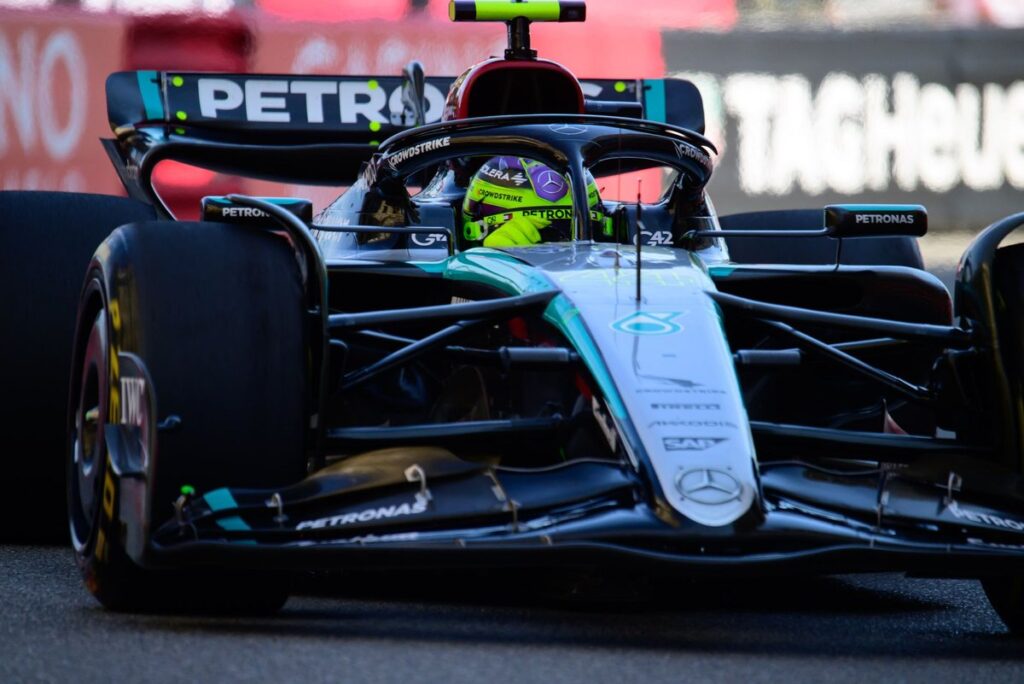Hamilton Bemoans Peakiness of Formula 1 Tyres, Pirelli Responds
In a recent interview, seven-time Formula 1 world champion Lewis Hamilton expressed his frustration with the peakiness of the current Formula 1 tyres. “Honestly, it’s probably the most frustrating thing,” Hamilton said. “You look back in the day when you had a much bigger working window to work with. Then you can just optimise the balance and then just have good grip throughout the whole lap. This is definitely my least favourite.“
However, Pirelli, the official tyre supplier of Formula 1, attributes the increased importance of tyre peakiness to the extraordinary closeness of the F1 field. According to Simone Berra, Pirelli’s F1 chief engineer, “Every tyre has a peak at some point and the operating window is always just a definition. We take a certain percentage of grip loss to define the window. I think even in the past it was the same. But probably it was less critical because the level of detail that we have at the moment is quite significant.”
Berra believes that the current F1 landscape, where teams are separated by just a few tenths of a second, has amplified the importance of tyre peakiness. “That’s why now everything is highlighted and important. In the past, 15-20 years ago, you had cars or drivers even divided by half a second or seven-tenths of a second so it was not so narrow. But the fight now is completely different, and even one-tenth of a second makes a great difference.“
Pirelli also acknowledges that tyre peakiness can vary from car to car and between compounds. “We know very well that especially C4, and in some cases obviously with high temperature the C5, there can be a peaky performance. Some teams are less able compared to others to extract the peak of performance. Part of it is the tyre, yes honestly it is, but part of it is as well, the car, the suspension, and how the car is, exploiting the compound performance. So, it’s both factors.”
Pirelli recently revealed how it defines the working range of the tyre, which is the temperature area that is within 3% of the peak grip possible. With margins so close in F1, getting tyres to the absolute peak grip has become crucial. As Mario Isola, Pirelli’s head of car racing and F1, explained, “If we look at a graph, the grip of the tyre is on the vertical coordinates and the temperature is on the horizontal. In the cold, any compound that is developed for motorsport has little grip. Instead, the grip increases as the temperature goes up. There is a curve that goes up until it reaches a peak, and then beyond that there will be a significant drop in grip due to overeating.“
Pirelli’s goal is to provide drivers with a tyre that has a wide plateau, ensuring a bigger operating window. Isola added, “Our goal is to give the drivers a tyre with a wide plateau, to ensure a bigger operating window.” As the 2023 Formula 1 season approaches, the debate around tyre peakiness is expected to continue, with teams and drivers searching for every possible advantage in the highly competitive world of Formula 1.
“If we look at a graph, the grip of the tyre is on the vertical coordinates and the temperature is on the horizontal. In the cold, any compound that is developed for motorsport has little grip. Instead, the grip increases as the temperature goes up. There is a curve that goes up until it reaches a peak, and then beyond that there will be a significant drop in grip due to overeating.”
- Mario Isola, Pirelli’s head of car racing and F1
🔗 Source
